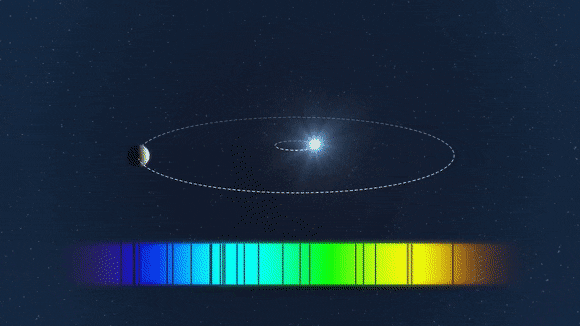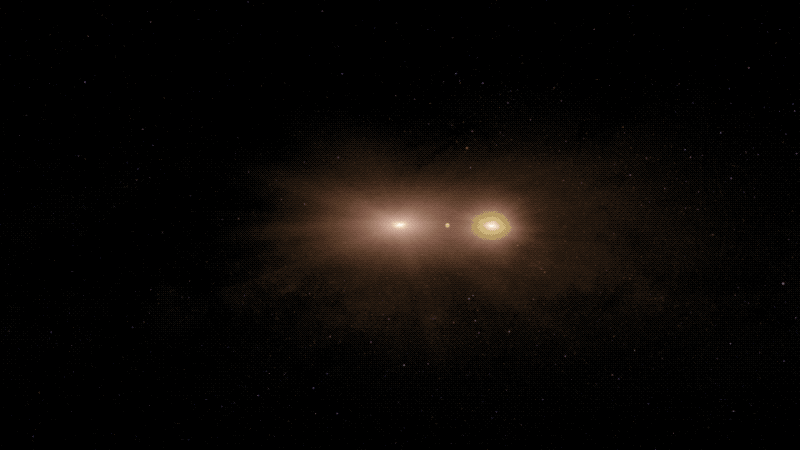
Welcome!
Welcome to my website! My name is Zhexing Li, currently pursuing a PhD in the Department of Earth and Planetary Sciences at the University of California, Riverside (UCR) under the guidance of Prof. Stephen Kane. My research focuses on the detection and characterization of exoplanets utilizing radial velocity and direct imaging techniques, as well as other related areas.
Before joining UCR, I completed my Bachelor of Science degree at the University of California, Santa Barbara (UCSB), majoring in Physics and minoring in Astronomy and Planetary Sciences. Following graduation, I spent a year interning at Las Cumbres Observatory (LCO) before relocating to Boston. There, I earned a Master of Arts degree in Astronomy from Boston University (BU) after two additional years of study.
Feel free to explore other sections of my website to learn more about my professional and personal endeavors. If you have any inquiries, please don't hesitate to reach out to me.

RESEARCH
My research interest covers a range of topics, all related to detection and characterization of exoplanets. My current work involves the radial velocity (RV) and direct imaging (DI) techniques, and I have past experience with the microlensing method as well.
Radial Velocity
Radial velocity (RV) detection of exoplanets involves measuring periodic red and blue shifts in the stellar spectral lines, known as the Doppler effect. These shifts occur due to the gravitational pull exerted by orbiting planets on the star. By observing these shifts over extended periods, we can uncover the periodic oscillations of stars induced by exoplanets, which can range from days to years. Currently, I am utilizing data from telescopes such as the Automated Planet Finder, Keck, and Anglo-Australian Telescope, coupled with advanced modeling tools, to identify potential new exoplanet candidates. Additionally, I am intrigued by the characterization of both periodic and non-periodic signals of stellar activity, such as magnetic cycles and stellar jitter. This exploration is crucial for distinguishing genuine exoplanet detections from false positives and mitigating the impact of random noise on the detection of low-mass planets. These efforts are vital for the advancement of future extreme precision radial velocity techniques.

Radial velocity demonstration. Credit: ESO
Direct Imaging
Unlike many other indirect detection methods, direct imaging (DI) allows for the direct observation of planets using infrared emission or reflected light from their surfaces or atmospheres. This approach heavily relies on sophisticated instrumentation such as coronagraphs, starshades, wavefront sensing and control systems, as well as advanced image processing techniques. These tools enable the blocking of starlight, attainment of high instrumental contrast ratios, and the elimination of various sources of noise. Currently, I am actively engaged in the preparatory scientific efforts for exoplanet direct imaging with NASA's Nancy Grace Roman Space Telescope. Leveraging RV data and simulations, my focus is on refining the orbital ephemerides of known planets, identifying optimal candidates for direct imaging. This meticulous target selection process ensures that future imaging observations occur precisely when these planets are positioned favorably in their orbits. Additionally, I am involved in the integration of RV and DI detection limits, employing dynamical simulations to assess the potential discovery of new low-mass exoplanets within known systems using future imaging missions.

Direct imaging time series of HR 8799 system. Credit: Jason Wang & Christian Marois
Microlensing
A microlensing event involving exoplanets occurs when the gravitational field of a foreground planetary system acts as a lens, causing the light from a more distant background object to bend and magnify as the planetary system passes in front of it along our line of sight. These events are rare and easily overlooked, necessitating a global effort for continuous 24/7 monitoring when such occurrences are anticipated. During my time at Las Cumbres Observatory, I contributed to the development and enhancement of the microlensing observation and data pipeline. I participated in several microlensing projects, including a key initiative where we conducted simultaneous observations with two space telescopes, Spitzer and Swift, alongside ground-based observations. This collaboration resulted in the discovery of a brown dwarf.

Microlensing demonstration. Left: Observed lightcurve, middle: slightly exaggerated what we see, right: top down view of the geometry. Credit: NASA
Personal
Beyond my research, music has been a big part of my life. I play the trumpet and the piano. I picked up my rudimentary keyboard skills during college but I have been playing the trumpet since early elementary school. During my middle school, high school, and college years, I was involved in several wind ensembles and orchestras, performing live concerts at various venues. Though how often I practice them now is a big question...
I love the experience of going to the movies (when there's no pandemic, of course). With my musical experience background, it's no surprise that I'm a huge fan of movie soundtrack (musical score). I enjoy collecting soundtracks from various sources such as movies, TV shows, documentaries, movie trailers, and even games. My collection is extensive, boasting almost 20,000 tracks and growing. As a lossless audio aficionado, of course all tracks of of premium quality.
I'm a massive sports enthusiast, particularly soccer (calling it football like the rest of the world makes much more sense!), basketball, and Formula One. As a die-hard supporter, I'm unwaveringly loyal to Real Madrid and Ferrari. Despite Ferrari's lackluster performances in recent seasons, I make it a point never to miss a Formula 1 Grand Prix. However, sorting out my sleep schedule becomes quite the challenge when race weekends are held in Europe, which comprises over half of each year's racing calendar.
I like hiking, video games sometimes (World of Warships), and of course, good food (I mean... who doesn't).

My Yamaha-8445 B-flat trumpet with all my mouthpieces and mutes.

One of the many pandemic hikes: Mount Baldy in SoCal. Elevation:10,064 ft (3068 m).